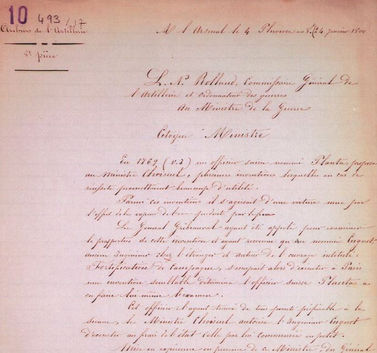Preview of the Member Archive!
The Tampa Bay Automobile Museum to proud to offer this sample page of the 1770 Fardier De Cugnot from the Member Archive! For just $25, you can unlock a treasure trove of exclusive photos, videos, and historical documents that delve deep into the world of automotive history. This 12-month membership offers a unique opportunity to explore the stories behind our remarkable car collection and the visionary engineers and innovations that have shaped the automobiles we know today. Join today and start your exclusive journey!
第1770章
世界上第一辆自行式车辆
生产年份:1770
国家:法国
生产数量:1
Nicholas-Joseph Cugnot 的蒸汽动力 Fardier(轮式手推车)是世界上第一辆自行式车辆,使他成为世界上第一位汽车工程师。
他必须设计并制造出第一台蒸汽机,蒸汽在高于大气压的压力下驱动汽缸中的活塞。他还发明了一个由活塞启动的旋转阀,让蒸汽进出机器的两个汽缸。该车辆在 Fra 进行了演示从 1770 年开始,拉动一门五吨重的大炮。
自 1801 年以来,原版 1770 Fardier de Cugnot 一直被法国巴黎 Le Conservatoire de Arts et Metiers 收藏。我们的 Fardier 是一款功能齐全、忠实的由坦帕湾汽车博物馆从头开始创建并于 2010 年完成的复制品。
Polypack 和坦帕湾汽车博物馆的工程师为 Fardier de Cugnot 赋予了新的生命力。这是 Nicolas Cugnot 的 Fardier 200 多年来首次运行!
Building the Replica: Tampa Bay Automobile Museum's Tribute
The project began with extensive research into the original Fardier de Cugnot. The museum's team delved into historical documents, drawings, and descriptions of the vehicle. They consulted works such as "Les Éléments de l'Art Militaire Ancien et Moderne" by Cugnot himself, as well as analyses by subsequent historians and engineers. The goal was to understand not just the physical dimensions and components of the Fardier, but also the underlying principles of its design and operation.
Research and Expert Consultation
The museum studied existing replicas, particularly the one built by the Deutsche Bahn Museum in 1935. This model provided valuable insights into the construction methods and materials that could be used. However, the museum aimed to go beyond a simple visual reproduction to create a fully functional replica that could replicate the original vehicle's performance.
To ensure historical accuracy and technical feasibility, the museum consulted with experts in steam engineering, historical vehicle restoration, and 18th-century engineering practices. This collaboration helped in making informed decisions about materials, construction techniques, and modifications necessary to achieve a working model.
The construction process involved recreating the steam engine's cylinders and pistons following General de Gribeauval's original specifications. The boiler design was modernized to address inefficiencies and safety concerns, using steel tubes to maximize heat exchange and enhance safety while incorporating historical elements. The distributor and valve mechanism were meticulously reconstructed, and the steel chassis, wooden frame, and wheels were built to match the original specifications.
Construction Process
Following General de Gribeauval's original specifications, the team produced detailed plans in both imperial and metric measurements. They identified the need to use the "Chatelet toise" for certain dimensions, ensuring historical accuracy. The cylinders were cast using sand molding techniques in Tampa, Florida, and then machined to precise tolerances in the museum's workshop.
One of the most challenging aspects was the boiler. The museum aimed to address the inefficiencies and safety concerns of the original design. They opted for a modern tubular boiler design, with steel tubes running through the water to maximize the heat exchange surface. This approach not only increased steam production efficiency but also enhanced safety.
The team incorporated historical elements, such as using brass tubes for the water flow and ensuring the boiler fit within the original space constraints between the Fardier's outriggers. They also added a safety valve and other modern safety features, respecting the historical design while ensuring operational safety.
Recreating the distributor and valve mechanism was another intricate task. The museum relied on drawings from the Industrial Inventory dating from the early 19th century and incorporated a spring mechanism to accelerate the valve's rotation. This dual-timing system, essential for the smooth operation of the engine, was meticulously reconstructed to match Cugnot's innovative design.
The steel chassis, wooden frame, and wheels were constructed to match the original specifications. The plans were drawn in inches, and hex bolts were used as they were historically accurate. The museum ensured that the various parts fit together logically and securely, replicating the robust construction techniques of the 18th century.
Testing and Refinements
Before using steam, the team conducted initial tests with compressed air. This allowed them to verify the motion of the pistons and the operation of the distributor without the risks associated with high-pressure steam. These tests revealed minor adjustments needed to ensure smooth and efficient operation.
Once the compressed air tests were successful, the team moved on to steam trials. The modern tubular boiler performed admirably, generating sufficient steam to power the vehicle. The Fardier replica moved smoothly, without the jerky motions or vibrations that plagued the original design. This success validated the team's design choices and construction methods.
Public Display and Educational Outreach
The completed replica of the Fardier de Cugnot was unveiled at the Tampa Bay Automobile Museum, now serving as a centerpiece that demonstrates the ingenuity and foresight of early automotive engineering. The museum has integrated the Fardier replica into its educational programs, teaching visitors about the history of steam power, the evolution of automotive technology, and the challenges faced by early inventors like Nicolas-Joseph Cugnot.
Preview of the Member Archive!
The Tampa Bay Automobile Museum to proud to offer this sample page of the 1770 Fardier De Cugnot from the Member Archive! For just $25, you can unlock a treasure trove of exclusive photos, videos, and historical documents that delve deep into the world of automotive history. This 12-month membership offers a unique opportunity to explore the stories behind our remarkable car collection and the visionary engineers and innovations that have shaped the automobiles we know today. Join today and start your exclusive journey!





































